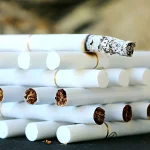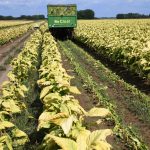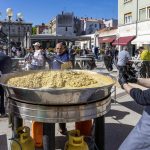As Poslovni Dnevnik/Darko Bicak writes on the 22nd of September, 2019, Helio Moura is the tobacco development manager for British American Tobacco Corporation (BAT) and the owner of Croatia’s TDR in Kanfanar.
Tobacco is an important crop for Croatian agriculture with stable production conditions and constant growth in terms of value, and tobacco worth a massive 124 million kuna is produced annually in Croatian fields.
Statistics show that a mere 400 tobacco farmers account for as much as 62 percent of the total value of Croatian potato production, as well as fruits, with it accounting for as much as 55 percent of the value of grapes and 48 percent of the value of Croatian olive oil production.
Most domestic tobacco production is concentrated through the system of the company Hrvatske duhani, which is within the system of the British American Tobacco Corporation (BAT), which took over the domestic TDR a year ago. Poslovni Dnevnik sat down and spoke with Helio Moura, BAT’s tobacco development manager, about the trends in tobacco production and what Croatian farmers can expect in the coming period.
How important is Croatian tobacco production in the context of its total production in Europe, of course for BAT?
Tobacco production exists in many European countries, but as far as BAT is concerned, Croatia is the only country in Europe where we’re developing our tobacco production. Production in Croatia is very important to us in this context, because from here we deal with our supply from the factory in Kanfanar, as well as our other factories in Europe.
How much does your factory in Kanfanar satisfy the tobacco raw material needs from domestic sources, ie from Croatian tobacco?
Tobacco from Croatia is used not only in the factory in Kanfanar but in many of our other factories in Europe. It is important to know that tobacco products consist of special blends of tobacco, a blend of various types of tobacco that give the characteristic aroma of the product.
This means that different tobacco from many countries is mixed to produce the final product. As regards the use of tobacco produced in Croatia at the Kanfanar plant, it is estimated that between one third and 40 percent of local tobacco is processed in Kanfanar and the rest is exported.
To how many European countries does BAT export its raw material from Croatia?
Tobacco from Croatia is exported to six of our factories in Europe.
If you use about 40 percent of your home-made tobacco in your Croatian factory, how many countries, or how many other types of tobacco do you supply in Kanfanar?
We want to give all our consumers the same quality, the same taste so that all of our final products are blends of tobacco from a number of sources but standard quality. In the blends, as a rule, we use European tobacco, but just as we do with Brazilian and Oriental. There are almost no finished products which are made from only one type of tobacco.
How profitable is tobacco leaf production for farmers?
Tobacco is one of, if not the most profitable, agricultural crops in Croatia as well as in any other country in the world.
I can say with certainty that growing tobacco is at least three or four times, and somewhere around five or six times, is a more profitable agricultural crop than any other. However, it is our rule that we ask the farmers we cooperate with to engage in other crops, with the aim of optimising their overall agricultural production, with tobacco being just a kind of ”cash flow” to their total agricultural business.
How many farmers do you have under contract in Croatia and what is your cooperation with them?
We have more than 400 subcontractors in Virovitica-Podravina County and the area around Kutjevo. Tobacco cultivation takes place on approximately 3,000 hectares of agricultural land.
Does the popularisation of new smoking technologies, such as e-cigarettes, threaten agricultural tobacco production?
The fact is that the use of such ”new generation” products globally reduces the use of classic tobacco products. However, these new products are focused on the elimination of tar and most other harmful substances generated by the burning process, but many of them still use nicotine. And nicotine is obtained from the tobacco leaf. So we don’t really expect production to fall in that part.
What are your specific plans for tobacco production in the future in Croatia?
We plan further investments in tobacco production in Croatia. Tobacco production is one of the best organised [types of production] in Croatian agriculture, and we support our subcontractors financially, also through the continued support of our agronomists, but also by transferring a lot of know-how and practices that we have in our global centres of excellence.
Croatian Tobacco financing subcontractors finance more than two-thirds of the total value of production each year in advance, amounting to more than 60 million kuna, they grant favourable long-term loans for investments in various equipment and irrigation systems, and last year, they opened new long-term credit lines for the procurement of mechanical pickers.
29 tobacco harvesting machines have already been invested in, and the plan is to continue at the same time pace in the forthcoming period. Machine harvesting will certainly help our subcontractors to address the problem of labour shortages, which have been the biggest impediments to increasing tobacco production.
Make sure to follow our dedicated business page for much more.











